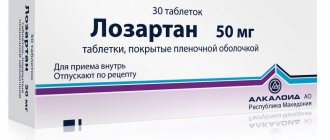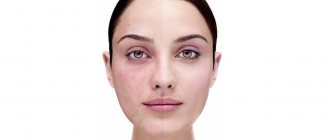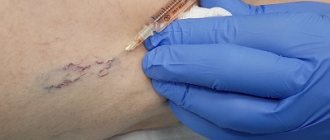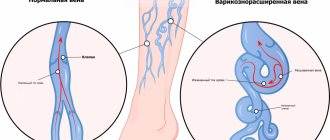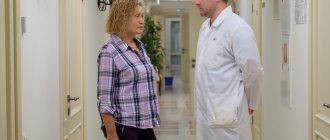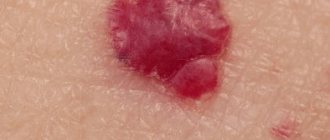Couperosis is a fairly common phenomenon among the population, especially the female part. Constant redness of the skin, spider veins or spider veins - at first glance, a common cosmetic problem that you want to eliminate and forget. However, everything is not as simple as it seems.
At risk are people with sensitive skin and those whose parents or other close relatives have experienced rosacea, since this disease can be inherited.
In addition to genetic predisposition, very often rosacea can be one of the symptoms of diseases of the internal organs, in which damage to the vascular wall occurs. Because of this, it is very important not only to eliminate the manifestation, but to identify the cause of the appearance of this pathology on the skin. The most problematic area is the face. Most often, capillary stars are located in the cheeks, chin and along the wings of the nose.
How does rosacea appear?
Due to various factors (genetic predisposition, poor lifestyle, the presence of a chronic disease), damage to the walls of blood vessels occurs, disruption of their elasticity, which leads to their ruptures and compensatory growth of the pathological vascular network. As a result, blood from the arterioles, bypassing the capillaries, enters the venules through shunts. Such vessels do not perform their trophic function properly: the delivery of oxygen and nutrients to the skin is disrupted. From this we draw the first conclusion why rosacea is so dangerous for us. Many stagnant vessels lead to disruption of skin metabolism and respiration, dryness, decreased immunity, and therefore to premature aging of the skin.
What is rosacea and what are its signs and symptoms?
Cuperosis is a stable local expansion of individual small capillaries of the skin, accompanied by thickening and a pronounced decrease in the elastic qualities of the walls of blood vessels, as well as blood stagnation. This term is most often used in cosmetology. As for the general medical term “telangiectasia,” it was first introduced back in 1807 and is literally translated as “dilated tip of the vessel.” The expansion of skin capillaries in this pathology is observed 5 or more times - up to 100 microns, whereas normally the diameter of the vessels should not be higher than 20 microns. This skin defect can occur in patients of any gender and age, but is most often observed in people over 40 years of age.
Cuperosis has four stages, each of which has certain symptoms:
Stage 1 - erythema (irritation of the skin on the face). At this stage, a small number of capillaries become visible.
Stage 2 - dilated capillaries unite over time, forming a network. At the same time, they acquire a more intense color.
Stage 3 - the so-called congestive erythema. This stage is characterized by individual or multiple telangiectasias, and the network of united dilated capillaries is localized to a greater extent in the middle part of the face.
Stage 4 - capillaries are visible even more clearly, in addition, vessels located on the entire surface of the face are added to the pathological process. The result of a general spasm of the capillaries becomes visible areas of local whitening.
What causes rosacea on the face?
Modifiable risk factors for the progression of rosacea are:
- excessive sun exposure,
- overheating (local steaming of the facial skin, frequent visits to baths/saunas),
- abuse of alcohol, coffee, chocolate, as well as very spicy and hot foods
- smoking,
- regular trauma to the skin, especially for so-called home care (for example, scrubbing, peeling)
- incorrect selection of cosmetic procedures (deep peelings, warming solutions, hardware massages).
- pregnancy and childbirth
- lifting weights
Of course, it is extremely difficult to give up habits acquired over the years. You can start with a slight reduction in the presence of these risk factors, and already noticeably improve the quality of your skin. And in the future, completely abandon the harmful effects. It is important to understand that the sooner we eliminate the cause, the faster the skin will delight us with its healthy state.
In addition to predisposition and exposure to risk factors, rosacea can be caused by serious diseases of internal organs and serve as an important diagnostic symptom.
Preventive actions
As a preventative measure, it is important to follow the general rules and recommendations:
- Stress less at work and walk outdoors more often.
- Before going outside on a hot sunny day in summer, apply protective creams or lotions .
- Eat more vegetables and fruits.
- Do not abuse alcohol and smoking.
- Avoid strong coffee and tea.
- Do not use aggressive cosmetics.
- Do not overuse the bathhouse or sauna.
- Protect your skin from exposure to high or low temperatures.
- Visit a dermatologist every six months.
Cuperosis as a manifestation of diseases of internal organs.
The most common diseases that cause damage to the vascular wall:
- arterial hypertension, acute crisis or chronic malignant course, when systolic blood pressure is above 160 mmHg and cannot be corrected.
- diabetes mellitus, in which the level of glycated hemoglobin in the blood increases, which leads to disruption of oxygen metabolism in the vascular wall and causes tissue hypoxia. Subsequently, microangiopathy develops, leading to trophic disorders.
- vascular symptoms can be a warning sign indicating the presence of liver disease, an inflammatory process of an infectious or viral nature.
- autoimmune diseases, such as systemic lupus erythematosus and scleroderma, are also manifested by damage to the capillary network, which can serve as an early diagnostic symptom.
- hormonal disorders of various origins, ranging from dysfunction of sex hormones to disorders caused by brain tumors.
What are small hemorrhages on the skin?
Hemorrhage under the skin occurs when capillaries rupture. Due to the small amount of blood in the thinnest vessels, the spots will be within millimeters in size. Usually there is a single localization of such points. A person does not feel a deterioration in health, and may not even be aware of the presence of petechiae on the skin.
To understand that a skin rash is damage to the capillaries, and not an allergy, it is enough to press on that place - the spots do not change color and do not disappear. After some time, the formations will lighten and then disappear.
How to treat rosacea on the face?
There are several ways to treat rosacea and they all boil down to destroying and removing damaged capillaries.
Possible treatments:
- laser removal of blood vessels
- phototherapy
- electrocoagulation
- sclerotherapy
During sclerotherapy, a special drug is injected into the dilated vessels - a sclerosant, which blocks the capillaries, and over time they disappear without a trace. However, in the case of small vessels, this method does not work, therefore, it is mainly used to treat spider veins on the legs.
Electrocoagulation consists of introducing a subtle game into damaged capillaries, through which an electric discharge is released, destroying the vessel. The procedure is very long-term, moreover, it is painful and traumatic, as it is accompanied by a high risk of the formation of small scars. Therefore, today it is practically not used.
Treatment of rosacea on the face with laser and phototherapy.
The most modern and safe way to remove blood vessels on the face is laser treatment. With laser coagulation, the walls of the vessel “glue” together, which leads to its instant disappearance. With larger vessels filled with blood, when exposed to a laser, its color darkens due to the oxidation of hemoglobin. The vessel becomes dark purple and disappears after a few days due to its destruction by immunocompetent cells. The treated area of skin turns red and swells slightly during the procedure; this reaction may last for several days.
It is recommended to perform such a procedure only in medical clinics with a medical license. This method is safe and most effective, in comparison with the previous ones, after it there are no scars or pigmentation left on the skin.
In Medical-Aesthetic, a neodymium laser HarmonyXL (Israel) with a wavelength of 1064 nm is used to remove spider veins on the face.
The ideal treatment for rosacea is a combination of laser treatment and AFT therapy or phototherapy. With the help of a laser, it is possible to get rid of dilated blood vessels that are visible to the eye, while AFT and phototherapy can remove general redness that occurs due to the expansion of many tiny capillaries. Thus, these two methods do not replace each other, but are selected depending on the caliber of dilated vessels and are an excellent combined treatment.
The newest method of treating rosacea is AFT therapy, which is an improved version of phototherapy, which allows you to halve the number of procedures and make them much more pleasant in terms of tolerability. More details about the relevant technology can be found in the corresponding section.
You can only get rid of rosacea using hardware methods. It is impossible to cure rosacea with the help of creams, tablets and other medicinal or cosmetic products; you can only make its manifestations less noticeable.
It should be noted that there are procedures aimed at treating the effects of rosacea and preventing damage to the vascular wall. Among them are biorevitalization, mesotherapy with vascular-strengthening drugs, plasma therapy, placentotherapy and botulinum therapy. The selection of procedures is carried out depending on the skin type, the causes of rosacea and its severity.
In addition to cosmetic procedures, it is recommended to undergo an examination in order to exclude a more serious disease or identify pathologies of internal organs. Such an examination may include blood tests (for infections, hormones, general, biochemical and immunological tests), urine analysis, ultrasound examination of the abdominal organs (especially the kidneys, adrenal glands, pancreas, echocardiography of the heart) and blood vessels, as well as other studies depending on the diagnosed pathology.
Be attentive to yourself and your loved ones; timely consultation with a doctor provides great guarantees for a quick recovery.
Reasons for appearance
The vascular network on the face indicates a disturbance in the body's circulation and stagnation of blood in small capillaries. Both men and women suffer from the disease.
Important! There is no need to start treating a disease without specifying why it arose!
The causes of rosacea (dilated blood vessels) are varied.
- Abuse of bad habits - alcohol and smoking have a bad effect on the entire body.
- Temperature fluctuations and changes.
- Unhealthy environmental situation.
- Disorders in the circulatory system (heart disease).
- A person works a lot and rests little.
- Depression, apathy.
- Overheating (long exposure to the scorching sun)
- Thyroid gland dysfunction (hormone problem).
- Heredity.
Important! the appearance of a fine mesh on the face is the result of diseases of certain organs, and in order to be cured, you need to know the cause.
Cuperosis is characterized by the appearance of small vessels on the face in the surface layer of the skin due to impaired blood flow and wear of the capillary walls. It can warn of serious disorders in the body and, in addition, makes the face aesthetically unattractive.
People at risk for the disease:
- Mothers of many children.
- Newborn children (lack of subcutaneous fat).
- Workers in hazardous production.
- Working outside in winter.
- Anyone who is overweight.
- With high blood pressure.
The reason for the appearance of small vessels can be ordinary physiology, for example, a woman is carrying a child, childbirth and the onset of menopause - under the influence of hormones, blood vessels burst on the face and red spots form.
When an elderly person suffers from this disease, there is no need to take special measures for treatment. Body tissues age over time, and blood vessels become fragile. For prevention, it is advised to drink vitamin C and other multivitamins, and prescribe a diet and special creams.
In order not to aggravate the process of rosacea, you need to eat right, follow a daily routine, and give up smoking and alcohol.
Couperosis on the face: treatment with folk remedies at home.
The most proven and effective way to treat and prevent rosacea is cold tea lotions made from lightly brewed black tea. Just 15 minutes 2 times a day for a week will allow you to feel a noticeable effect. Do not use ice to wipe your face, as this can lead to hypothermia of the skin, vasospasm and compensatory dilation of neighboring capillaries, which will increase the manifestations of rosacea.
The herbal mask is made up of calendula, chamomile, horsetail, yarrow and horse chestnut flowers. Equal parts of each component are mixed with boiling water until a thick paste is formed and infused for ten minutes. Then the resulting slurry is cooled and applied to a gauze mask, which is placed on the face. After 15 minutes, the mask is washed off with a decoction of chamomile or yarrow.
This is just a small part of our secrets.
You can get more detailed advice from your cosmetologist. Dermatologist, cosmetologist: Lachinova Natalya Mikhailovna
Disease prevention
A person suffering from dilation of blood vessels and capillaries on the face must take preventive measures to eliminate the defect. To get started you need:
- Eat properly and balanced.
- Give up bad habits.
- Visit the solarium less and stay under the scorching sun for a long time.
Not recommended:
- the use of scrubs and peels, as they scratch the surface layer of the skin,
- lotions that contain alcohol, this additionally dries out the skin,
- cream containing honey and menthol.
